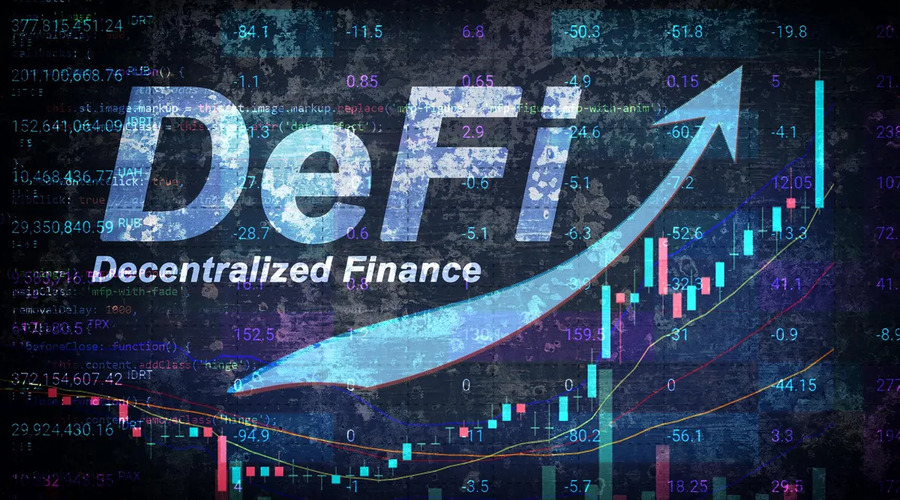The decentralized finance (DeFi) ecosystem has gained immense popularity in recent years, revolutionizing traditional financial systems by leveraging blockchain technology. At the heart of DeFi lies smart contracts, self-executing contracts with the terms of the agreement directly written into the code. However, while smart contracts bring efficiency and automation to financial transactions, they are not immune to security vulnerabilities. In this article, we will explore common vulnerabilities found in smart contracts and discuss best practices for ensuring their security in the DeFi space.
Introduction to Smart Contract Security in DeFi
Smart contracts are programmable agreements that execute predefined actions when specific conditions are met. In DeFi, they enable decentralized lending, borrowing, trading, and other financial activities without the need for intermediaries. As smart contracts handle significant amounts of value, their security becomes crucial to protect users’ funds and maintain the integrity of the DeFi ecosystem.
Understanding Smart Contracts

Definition and Functionality
A smart contract is a computer program stored on a blockchain that automatically enforces the terms of an agreement between two or more parties. Once deployed, smart contracts cannot be altered, ensuring immutability and transparency in transactions. They eliminate the need for intermediaries, making financial processes more efficient and cost-effective.
Importance in DeFi
Smart contracts play a pivotal role in DeFi protocols by automating various financial operations such as lending, decentralized exchanges, and yield farming. They enable users to interact with DeFi platforms directly, without relying on centralized authorities. However, due to their code-based nature, smart contracts are susceptible to vulnerabilities that can be exploited by malicious actors.
Common Vulnerabilities in Smart Contracts
To ensure the security of smart contracts, it is essential to understand the common vulnerabilities they can be prone to. Let’s explore some of the most significant vulnerabilities and their potential impacts.
Reentrancy Attacks
One of the most well-known vulnerabilities is the reentrancy attack, where an attacker exploits a recursive call to another contract before the first call completes. This can lead to unexpected behaviors, allowing the attacker to drain funds from the contract or cause a denial-of-service (DoS) attack.
Integer Overflow and Underflow
Integer overflow and underflow occur when a mathematical operation results in a value beyond the maximum or minimum range that a variable can hold. Attackers can exploit these vulnerabilities to manipulate balances, bypass access controls, or disrupt the intended flow of the contract.
Unchecked External Calls
Smart contracts often interact with external contracts or oracles to retrieve data or perform actions. If these external calls are not properly validated and secured, attackers can exploit them to manipulate data, execute unauthorized actions, or drain funds from the contract.
Denial-of-Service (DoS) Attacks
Denial-of-Service attacks aim to disrupt the normal functioning of a smart contract or the entire DeFi protocol. Attackers can overload the contract with resource-intensive operations, consuming excessive gas and causing transactions to fail or become prohibitively expensive.
Front-running Attacks
Front-running attacks involve an attacker executing transactions ahead of legitimate users to exploit price discrepancies or manipulate trade outcomes. This can occur when the order of transactions is not properly secured or when sensitive information is leaked.
Best Practices for Smart Contract Security
To mitigate the risks associated with smart contract vulnerabilities, developers and auditors should adhere to best practices and follow robust security measures. Here are some key practices to consider:
- Code Auditing and Testing
Thoroughly auditing smart contract code is crucial to identify vulnerabilities before deployment. Manual code reviews, as well as automated security analysis tools, can help detect potential issues. Rigorous testing, including both functional and security testing, should be conducted to ensure the contract behaves as intended.
- Use of Secure Development Frameworks
Adopting secure development frameworks, such as OpenZeppelin, can provide a solid foundation for building secure smart contracts. These frameworks offer pre-audited and battle-tested code implementations for commonly used functionalities, reducing the likelihood of introducing vulnerabilities.
- Implementing Access Controls
Proper access controls should be implemented to restrict unauthorized access to critical functions and sensitive data. Role-based access control (RBAC) mechanisms can be employed to ensure that only authorized parties can execute specific operations.
- Minimizing External Dependencies
Reducing reliance on external contracts and oracles can help minimize the attack surface. Careful consideration should be given to the security and reputation of third-party dependencies, and contracts should be designed with resilience to handle potential failures or attacks.
- Ensuring Proper Error Handling
Comprehensive error handling is essential to prevent unexpected behaviors and vulnerabilities. Contracts should handle exceptional conditions gracefully, revert erroneous transactions, and provide informative error messages to users.
- Auditing and Certifications for Smart Contracts
While developers play a crucial role in ensuring smart contract security, third-party audits and certifications provide an additional layer of assurance. Independent security audits can identify potential vulnerabilities and recommend improvements. Certifications, such as the CertiK security standard or the ConsenSys Diligence certificate, demonstrate that a smart contract has undergone rigorous security testing and evaluation.
Examples of High-Profile Smart Contract Hacks
Despite best practices and audits, smart contract vulnerabilities have led to high-profile hacks in the DeFi space. Understanding these incidents can shed light on the importance of robust security practices. Let’s explore a few notable examples:
- The DAO Hack
In 2016, the decentralized autonomous organization (DAO) suffered a major security breach, resulting in the theft of approximately $50 million worth of Ether. Exploiting a vulnerability in the DAO’s smart contract, an attacker was able to drain funds from the organization.
- Parity Wallet Hack
In 2017, a vulnerability in the Parity multi-signature wallet contract led to the loss of over $30 million worth of Ether. The vulnerability allowed an attacker to take control of the contract and drain funds from the affected wallets.
- BZX Flash Loan Attack
In 2020, the BZX DeFi protocol experienced a flash loan attack, resulting in the loss of approximately $8 million. The attacker exploited a combination of vulnerabilities, including reentrancy and price manipulation, to
manipulation, to profit from the flash loan mechanism and manipulate the protocol’s lending and trading functionalities.
The Role of Bug Bounties and White Hat Hackers
Bug bounties and white hat hackers play a crucial role in identifying and mitigating smart contract vulnerabilities. Bug bounty programs encourage security researchers to find and responsibly disclose vulnerabilities in exchange for rewards. These programs help in discovering potential weaknesses in smart contracts and improving their overall security. Recognizing the efforts of white hat hackers and providing them with proper rewards and recognition fosters a collaborative approach towards smart contract security.
The Future of Smart Contract Security
As the DeFi ecosystem continues to evolve, advancements in smart contract security are being made to address emerging threats. Formal verification techniques, which involve mathematically proving the correctness and security of smart contracts, are gaining prominence. These techniques provide strong guarantees and reduce the risk of vulnerabilities. Additionally, smart contract insurance solutions are emerging to provide users with financial protection in the event of a security breach or hack.
Formal Verification Techniques
Definition and Importance
Formal verification involves mathematically proving the correctness and security of smart contracts. By using formal methods, developers can rigorously analyze the code, verify its behavior, and identify potential vulnerabilities before deployment. Formal verification provides a higher level of confidence in the security of smart contracts and reduces the risk of critical vulnerabilities.
Advances in Formal Verification
Recent advancements in formal verification techniques have made them more accessible and practical for smart contract development. Tools like the Solidity language integrated formal environment (SLiVER) and the K Framework provide automated formal analysis capabilities, enabling developers to detect vulnerabilities and ensure the correctness of their contracts more efficiently.
Benefits and Challenges
Formal verification offers several benefits, such as identifying hidden vulnerabilities, eliminating security risks, and increasing user trust. However, it also presents challenges, including the need for specialized skills and expertise in formal methods, the complexity of large-scale contracts, and the limitations of formal verification tools.
Smart Contract Insurance Solutions
The Need for Smart Contract Insurance
Given the potential risks and vulnerabilities associated with smart contracts, the demand for insurance solutions has emerged. Smart contract insurance aims to provide financial protection to users in the event of a security breach, hack, or loss of funds. These insurance solutions help mitigate the risks associated with interacting with smart contracts and foster confidence in the DeFi ecosystem.
How Smart Contract Insurance Works
Smart contract insurance works by pooling funds from participants and providing coverage against predefined risks. Users pay premiums to participate in the insurance pool, and in the event of a covered loss, they can make a claim to recover their funds. The insurance coverage is typically governed by a set of predefined conditions and smart contract rules.
Advantages and Challenges
Smart contract insurance offers several advantages, such as financial protection, risk mitigation, and increased user confidence. It provides an additional layer of security for users who want to engage with DeFi protocols. However, challenges exist, including the complexity of defining coverage conditions, determining appropriate premiums, and establishing trust in the insurance mechanism.
Conclusion
Smart contract security is of paramount importance in the DeFi space. Understanding common vulnerabilities and implementing best practices are crucial for protecting user funds and maintaining trust in the ecosystem. Thorough code auditing, robust testing, and the adoption of secure development frameworks can significantly enhance the security of smart contracts. Third-party audits and certifications further validate the integrity of contracts. Bug bounties and white hat hackers contribute to identifying vulnerabilities and improving overall security. With ongoing advancements in formal verification techniques and the availability of smart contract insurance solutions, the future holds promise for even stronger smart contract security.






